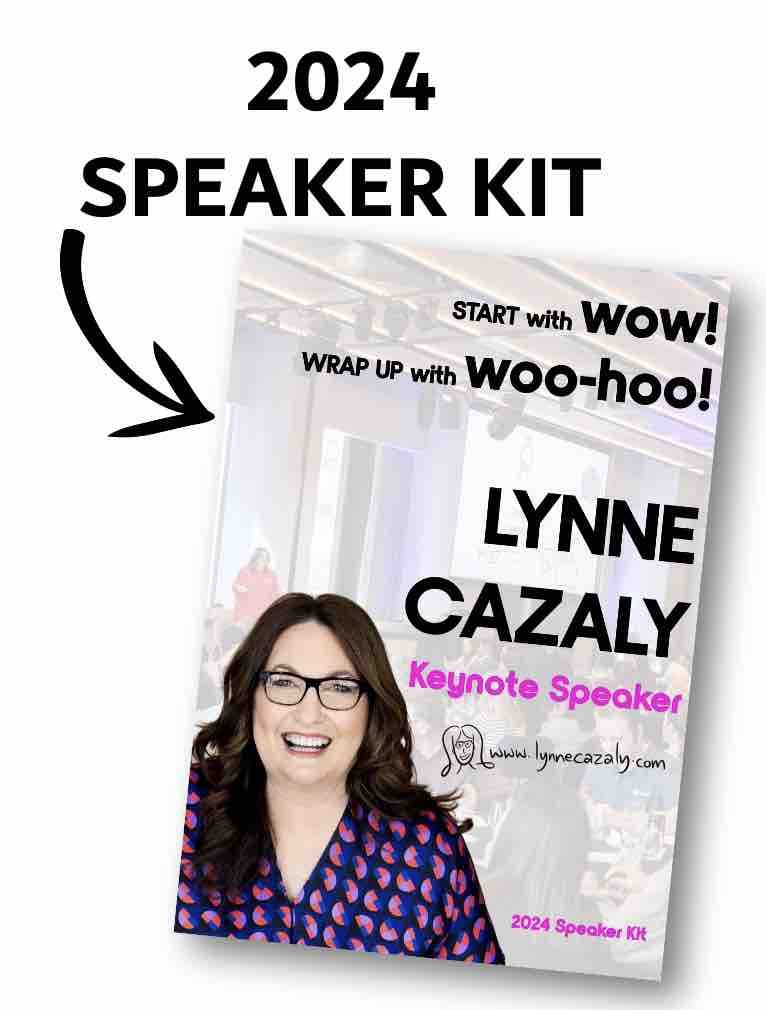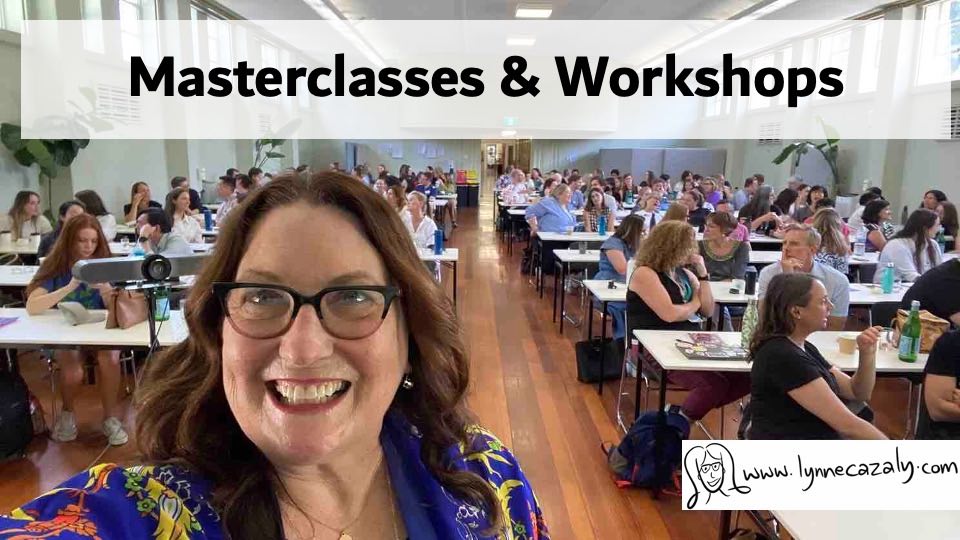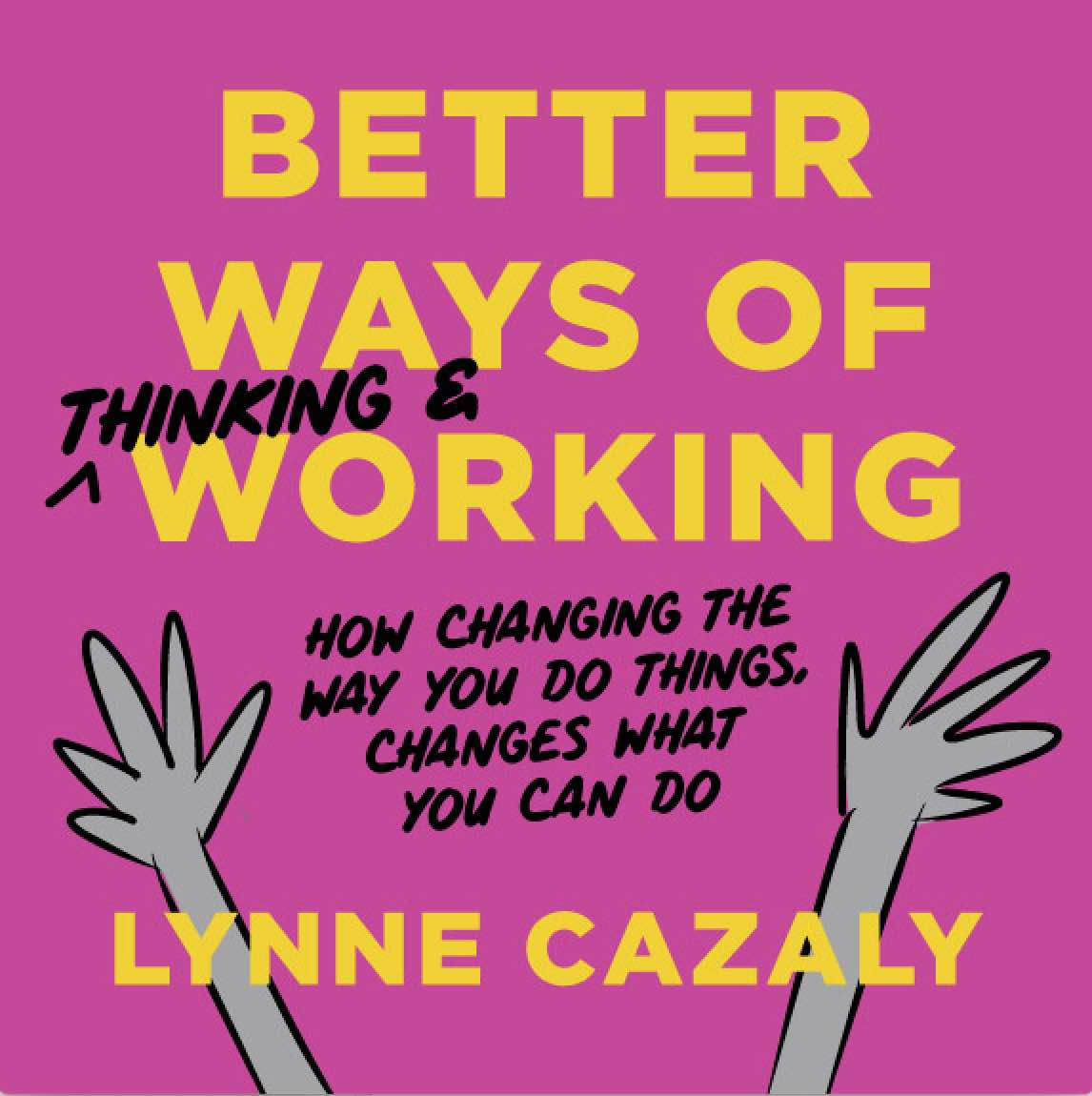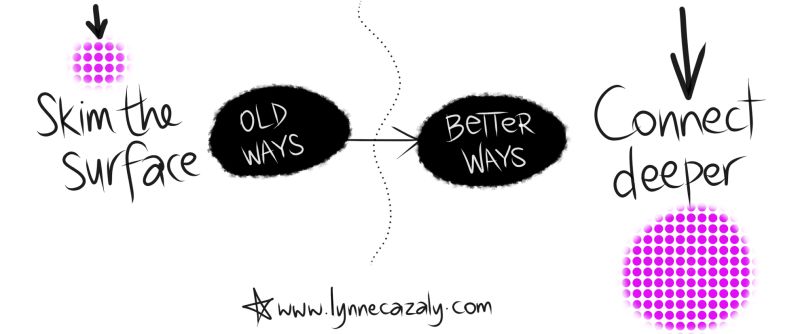Some Seasonal Readings from Lynne Cazaly
 Monday, December 18, 2023 at 5:41PM
Monday, December 18, 2023 at 5:41PM 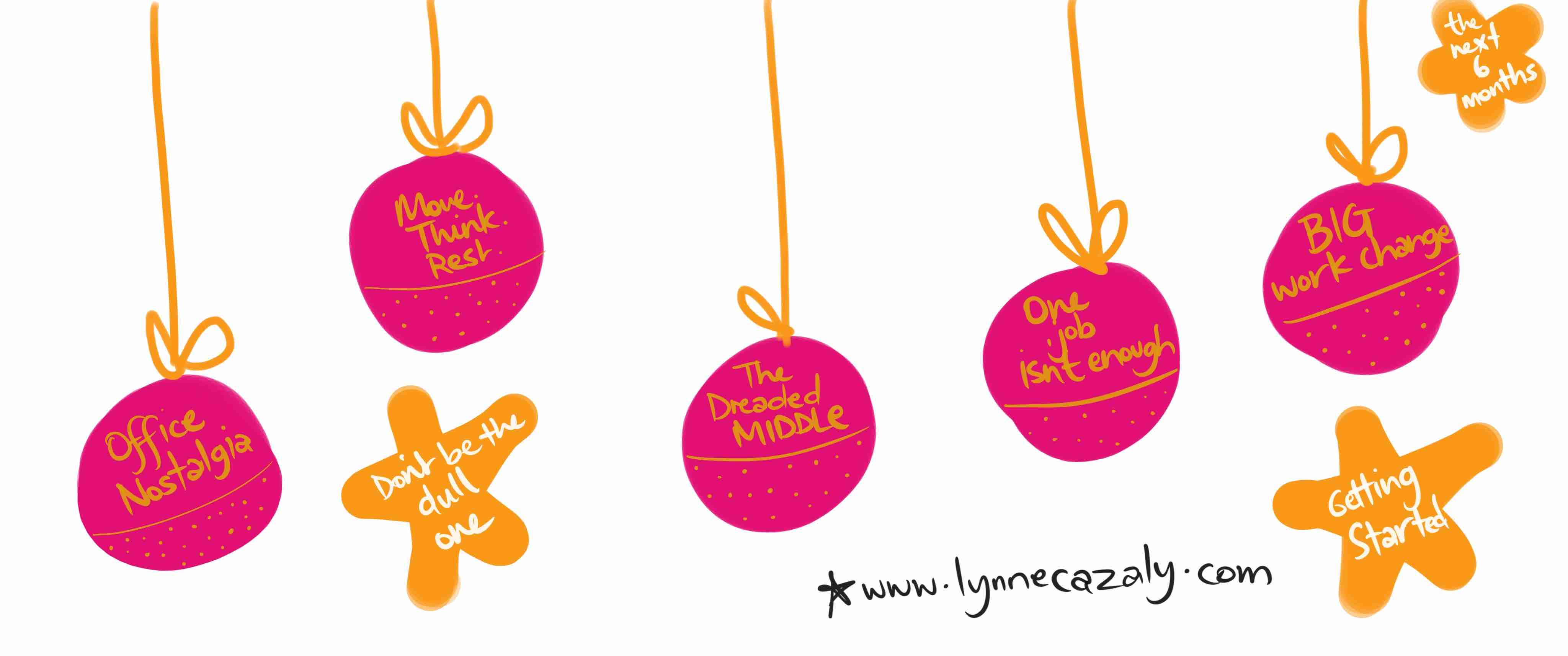 How office nostalgia keeps us stuck
How office nostalgia keeps us stuck
Some businesses and leaders just aren’t letting go of their return to office mandates and attendance requirements.
And we might be understanding some further reasons why they’re holding on so strong.
Memories, nostalgia, legacy and a sentimental history could be part of what’s keeping organisations stuck from evolving towards more modern work.
How? When so many people grew through their career working in an office — or a business or organisation that had a head office — changing that deeply historical mindset towards the office is what’s tough to shift. Memories of the good old days and the great times working in the office pre-pandemic could be a deep reason why some people/leaders/cultures are battling to evolve to newer ways of working.
Remote, flexible, asynchronous, hybrid and non-linear work are all part of the new way of working. Yet nostalgia can be strong.
Memory biases like Rosy Recollection, Episodic Memory, Recall Bias and Selective Memories all contribute to how we perceive the past and the present. And the way we see the office is a big one of those perceptions.
What to do?
🟨 Bring creative thought to combine old ideas into new original ones; be willing to experiment more with different approaches, pilots and techniques about modern work.
🟨 Don’t assume you’ve got it perfect and right after your first attempt at a hybrid model. Increments and iterations are part of new ways of working.
🟨 Look beyond leadership perspectives. Get more ideas and input from across the organisation. Consult further. Be willing to ask for opinions. No one view is right.
Being stuck in old ways of working comes about because of old systems, structures, mindsets and fears — masquerading as leadership, compliance and control. There’s so much more to new ways of working than how many days you return to a nostalgic office.
Read more in this Work Design Magazine article by Cynthia Milota and Jinger Tapia
Move think rest
New ways of working don’t just change businesses. They’re helping change people and the way they think, work and lead.
If you haven’t changed much about how you work since … well, since you learned how to work, it might be a good time to.
New ways go beyond the obvious stuff that’s changed work recently like technology or even increased remote work.
Look deeper and you can begin to redesign the way you think, the way you interact or collaborate and work with others and the way you lead a team.
The idea of ‘movement thought rest’ or MTR/motor framework shines a light on how the go go go push push push of work is an old old old way of working. Yes, ‘pushing through’ is very much an old way of working or thinking about the work we have to do.
Old metaphors, methods and models of work are breaking down in favour of more modern concepts that bring greater sustainability, wellbeing and enjoyment … to the whole of life.
Read more in this article in Fast Company and think about how you could be making the old ways of working a little more modern.
The dreaded middle
You might wince when you see a boarding pass for a flight that has you in the middle seat or realise the discomfort that’s ahead as you walk down the aisle.
Memes, stories and experiences abound on the tricky situation being ‘stuck in the middle’ can have: complex armrest rules, violated leg space, no quiet privacy, and gymnastics for getting in and out over sleeping peoples.
That’s indicative of other middle locations — particularly in today’s workforce.
The challenges of middle managers trying to survive the sandwich pressures of above and below have led to more stress, conflict, burnout, less satisfaction, layoffs, pay cuts, inflexibility …
The middle may have become more of a crowded cliff as lower levels have been pushed up into the space and higher levels slash and burn that which is below.
Research quoted in Fortune by Chloe Berger makes me wonder if the uncomfortable middle people might be rethinking who and what they want to be, where they want to be it … and how soon they can start making that change. The messy middle has become an even more turbulent space to be in recent times.
When one is not enough. Jobs that is
Many people may well be drowning under the weight of the responsibilities of one job role plus … you know… life.
And a good many people take on a second job to fill gaps in needs, meet their basic financial commitments or to build for their future.
But there’s a whole other world of the ‘over-employed’ who are working their work gigs to the max.
These eye opening accounts of how people take on, juggle and handle multiple job roles, reveal the hacks, tips, hints and tools used to put one over the employer … while you take two or three for yourself!
With recent years’ rise in remote work, stories of dual (or more) jobs held by one person were rumoured and reported on — but now there’s more insight into how it’s actually happening.
Before you get all “that’s so wrong” or “good for them” about it, read more to see the situations, skills, roles and reasons this is happening.
It’s another trend in response to the evolving nature of work.
While the underemployed people in our communities struggle to find suitable, flexible and reasonably paid work, there are many who are rising through the multiple job roles ranks.
And while there are tips here on how to do it… there are also some handy insights on how to spot it if it’s happening in your team or business.
Read more in the article by Aki Ito in Business Insider.
The BIG work change hiding in plain sight
As newer ways of working have reached many sectors and businesses, there’s still much to do. Many leaders still aren’t quite sure though, how to change work to adapt to the recent pressures of stress, burnout, flexibility demands and global pressures.
Lynda Gratton always seems to know just what to say! In this great article you’ll see some key points and suggestions about adopting new ways of working and redesigning work.
BUT … what about the HUGE point that could be getting in the way of change?
It’s right there… hidden in plain sight - that we can’t and shouldn’t be adopting or following the CEO’s default preferences for ways of working!
Yep, that’s a big status role in the organisation to influence and challenge … but well-being, productivity, engagement and success depends on it.
So many organisations find a shift to new ways of working challenging and full of roadblocks because of C-level attitudes and dated ways of thinking about work.
They often ‘know what’s best’ from their ‘experience’ - but that experience is rapidly becoming out of date and gained in a different era of work. I see this so frequently when I speak to senior leadership teams about new ways of working. I spend time guiding them through the ideas, evidence, methods and shifts they need to adopt to change and redesign the way their organisation thinks about work. And sometimes that’s a tough gig.
Attitudes and beliefs run deep.
And they want to minimize the risk, know that it WILL work before they adopt new ways.
But new ways are very much a new way of
▫️Thinking
▫️Working and
▫️Leading.
And it’s tough when that thinking gets blocked at the top.
We can help break through the blockades of dated experience that could be hindering how your organisation thinks about redesigning work.
Don't be the dull, ineffective one who leads
A meeting leader can often help find a path of progress through a meeting, is able to handle the agenda (or even no agenda!), the behaviours in the group, the barriers to progress, AND the obstacles to having a productive and successful team session.
That's a lot to juggle; no wonder meetings continue to be dull wastes of time. So it's possible .... that we could be leading dull, droning, ineffective meetings. Well, somebody sure is!
Lifting your leadership here -- where people get together to do work -- can make a huge shift in performance, engagement, morale and communication.
Join me live online, for this professional development session.
Build your facilitation skills session so your meeting leadership becomes more:
🌑professional
🌒collaborative
🌓effective
🌕productive.
Oh, and let's add creative to that too, as I'll include a range of creative ideas to boost any dull meeting or gathering.
More details here on dates, times and pricing.
And if this is something your team or organisation needs, let me know - I can deliver it inhouse, remotely too.
Getting started
If you’ve got plenty of ambivalence/meh and not enough motivation, perhaps this way of thinking and working can help.
Notice the difference between
🔆 motivation : that longer term energy and drive that keeps you going
🔆 activation : the tactics that get you started on something, and headed toward motivation.
I’ll frequently hack my activation for work by:
🔆gathering ideas when they pop into my head
🔆brainstorming some possible content for a keynote as soon as the enquiry comes in
🔆following my curiosity when I’m thinking about a topic and
🔆choosing the nicest task possible from a list of things to do for a project (like playing around with the book cover design over researching a dry topic.)
Momentum is joyous when you’ve got it. Just ask a kid on a swing.
But if you haven’t got it, how do you get started?
Find the thing that will get you going. Once you get going — activated — you may feel some more interest or purpose and energy for the work — motivated.
As we learn more about how we think about work and how we work best, the difference between activation and motivation can become enlightening… and mighty empowering.
The ‘meh’ feeling is nothing to feel bad about. Look for the things, tasks, hacks and tips that activate you … towards finding some motivation.
3 Mentoring spots available
As the end of year approaches I’ve got availability to work with 3 people 1:1 in mentoring over the next 6 months of 2024.
If you run your own business, run your own practice or are keen to build and grow, let’s talk about getting 6 x 1:1 sessions (+ other support, clever ideas and resources including my book writing program) locked in.
Message me about the first 6 months for 2024.

